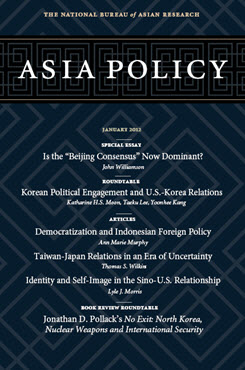Incompatible Partners
The Role of Identity and Self-Image in the Sino-U.S. Relationship
This article examines identity as an underexplored factor complicating U.S.-China relations and concludes that the identity variable contributes to mutual suspicion and frustrates efforts in conflict resolution.
EXECUTIVE SUMMARY
MAIN ARGUMENT
Many scholars and pundits have concluded that the noticeable downturn in U.S.-China relations in 2010 was merely an intermittent low in the broader “high-low” dynamic that characterizes the relationship. This article argues that recent tensions can also be understood as part of larger, macro-level suspicions stemming from the disparate identities that pervade bilateral relations. Analyzing the historical processes that have helped shape these identities and using four case studies to illustrate this phenomenon in action, this article argues that China and the U.S. have produced incompatible self-images, which, when interfaced, work at cross-purposes with each other. These dueling identities, if unmanaged, have the capacity to undermine cooperative relations in the long term. However, both countries could mitigate the identity variable by acknowledging the historical and cultural barriers precluding greater cooperation, as well as by utilizing multilateral mechanisms to address issues of common interest.
POLICY IMPLICATIONS
- Policymakers on both sides underappreciate how much the identity factor militates against long-term, healthy relations between the U.S. and China.
- China plays up its victim identity during times of conflict with the U.S. to seek leverage and legitimacy, which increases the likelihood of prolonged tension and misinterpretation.
- Future events in East Asia and beyond have a high likelihood of arousing reactions related to the identities of the U.S. and China, which could frustrate efforts in conflict resolution.
- Multilateral platforms, such as the UN and the ASEAN Regional Forum, offer promise for diffusing identity tensions in the pursuit of cooperation on issues of common concern.
- U.S. policymakers should understand that China’s strong rhetoric is often meant to assuage an increasingly nationalistic and hawkish domestic audience rather than as a signal of conflict escalation directed at the U.S.
About Asia Policy
Asia Policy is a peer-reviewed scholarly journal presenting policy-relevant academic research on the Asia-Pacific that draws clear and concise conclusions useful to today’s policymakers. Asia Policy is published quarterly in January, April, July, and October and accepts submissions on a rolling basis. Learn more


